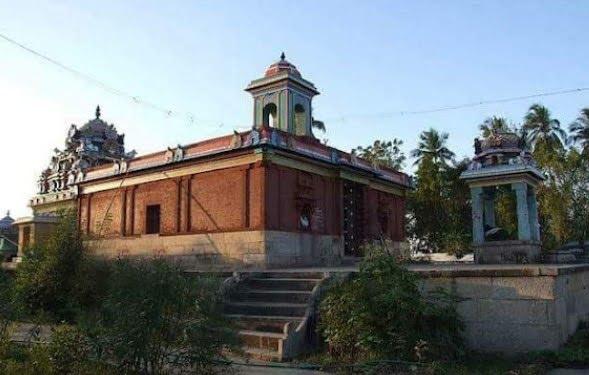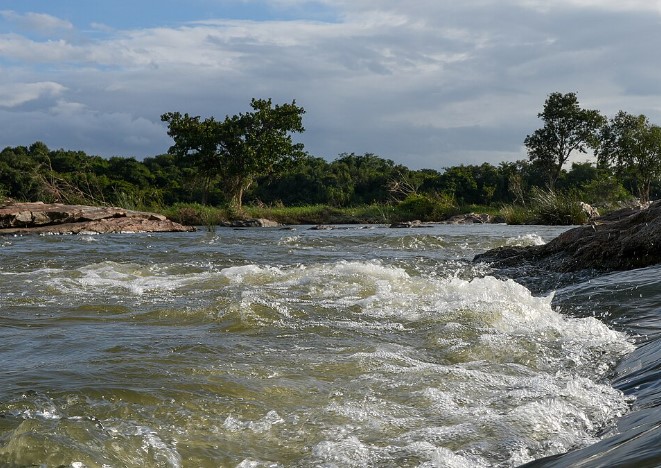- The Vaikal Nathar Temple, located in Thiru Vaigal Village within the Thiruvidaimarudur Taluk of Thanjavur District, Tamil Nadu, is the 150th Thevara Paadal Petra Shiva Sthalam and the 33rd Shiva Sthalam on the southern bank of the Cauvery River in Chozha Nadu.
- This temple is dedicated to Lord Shiva, who is worshipped as Vaikal Nathar, a self-manifested (Swayambumurthi) deity, and is also known as Shenbaga Aranyeswarar, reflecting the area's historical association with dense Shenbaga trees, earning it the name Shenbagaranyam.
- Constructed during the Sangam era by the Chola Emperor Kochengat Chola, this temple is classified as one of the 70 Maadak Koils, characterised by elevated structures that prevent elephants from accessing the sanctum. The temple features a single corridor and an east-facing main tower without tiers. The historical names of the temple include Shenbagaranyam, Mummoorthy Sthalam, and Nithyavasapuram.
- The temple complex also houses Brahmapureeswarar Temple and Viswanathar Temple at Valanagar. The name "Vaikal" is derived from the Tamil words Vai, kuru, and kal, meaning "small hill." Situated on the southern bank of the Nattaru River, the temple is revered as being equivalent to Mount Kailash.
- The presiding deity is accompanied by the goddess Vaikal Ambigai, also known as Kombiyal Kothai or Shaka Komalavalli.
PURANIC SIGNIFICANCE:
The Sacred Triad of Vaikal: The Three Shiva Temples
Vaikal is home to three revered Shiva temples—Vaikal Maadakkoyil, Sri Kasi Viswanathar Koil, and Sri Brahmapureeswarar Koil—each representing the three eyes of Lord Shiva, collectively referred to as "Mukkan Kshetram" or "Muntru Kan Kshetram" in Tamil. This term translates to "three eyes" (moondru) and "temple" (kshetram), symbolising the unity of these divine sites within a one-kilometre radius.
1. Sri Kasi Viswanathar Koil
Considered the right eye of Lord Shiva, this temple is believed to be a site where Lord Mahavishnu worshipped Sri Kasi Viswanathar and Sri Visalakshi.
2. Sri Brahmapureeswarar Koil
Representing the left eye, this temple is where Lord Brahma worshipped Sri Brahmapureeswarar and Sri Periya Nayaki.
3. Sri Vaikalnathar Temple
This temple symbolises the eye on Lord Shiva’s forehead, with the goddess Kombiyal Kothai as the presiding deity. It is one of the Maadak Koils constructed by King Kochengat Chola, and Saint Thirugnanasambanthar composed his pathigam here.
Legends Associated with the Temples
The legends surrounding these three temples are rich and intertwined:
- The Tale of Bhoomidevi: Bhoomidevi, desiring to marry Lord Mahavishnu, sought his hand, and the marriage took place. However, Lord Mahalakshmi (Sridevi), angered by this union, left Vishnu and performed intense penance on Lord Shiva in Vaikal. Both Vishnu and Bhoomidevi searched for Lakshmi and prayed to Shiva for guidance. In response, Lord Shiva advised Lakshmi to accept the marriage of Vishnu and Bhoomidevi.
- The Legend of the Elephant and the Anthill: Another legend recounts an elephant searching for its lost calf. In its quest, it inadvertently damaged an anthill, resulting in the ants biting and killing the elephant. Both the calf and the ants prayed to Lord Shiva for forgiveness. Shiva consoled the calf for its loss and pardoned the ants for their actions.
This sacred place, formerly known as Shenbagaranyam and Nithyavasapuram, has also been graced by the worship of numerous deities, including Brahma, Indira, Suryan, and Agasthiyar, solidifying its significance in Hindu spirituality.
PURANIC SIGNIFICANCE 2:
Mukkan Kshetram: The Sacred Triad of Vaikal Village
In Vaikal Village, three significant Shiva temples—Vaikal Maada Kovil (Vaikal Nathar Temple), Kasi Viswanathar Temple, and Brahmapureeswarar Temple—form a holy cluster known as Mukkan Kshetram or Moondru Kan Kshetram. This term translates to "Three Eyes of Lord Shiva," with each temple symbolizing a different eye. The Kasi Viswanathar Temple represents the right eye, the Brahmapureeswarar Temple the left eye, and the Vaikal Nathar Temple the eye on Lord Shiva’s forehead. All three temples are located within a one-kilometre radius, making them a unique spiritual destination.
The Legend of Mahalakshmi's Penance
The tale of these temples is deeply intertwined with the story of Mother Earth (Bhoomidevi) and Lord Vishnu. Bhoomidevi requested Vishnu to marry her, a request he accepted. However, this union angered Mahalakshmi, who left Vishnu and retreated to this place, then known as Shenbaga Vanam due to the abundance of Shenbaga trees. Here, she performed rigorous penance on Lord Shiva at the Vaikal Nathar Temple to win back Vishnu.
While she meditated, Lord Vishnu and Bhoomidevi searched for Mahalakshmi and worshipped Shiva at the Kasi Viswanathar Temple. Lord Brahma also visited, seeking Vishnu and Lakshmi, and worshipped at the Brahmapureeswarar Temple. Eventually, Lord Shiva advised Lakshmi to accept Vishnu's marriage to Bhoomidevi. Following his guidance, Lakshmi reunited with Vishnu at this sacred site.
The Legacy of Kochengat Chola
Kochengat Chola, an early Chola king and one of the 63 Nayanmars (Saivite saints), is credited with constructing many temples, including the Maadakovils—elevated structures that elephants cannot access. His backstory involves a spiritual rebirth from a spider that fought an elephant over worshipping Shiva, leading to his name, which means "king with red eyes." His contributions to Saivism included the establishment of 70 Maadakovils throughout the Chola empire, highlighting the importance of Vaikal as one of these significant sites.
The Legend of the Elephant and the Ants
An enduring legend tells of an elephant searching for its lost calf. In its quest, it accidentally damaged an anthill, leading the ants to bite and kill it in retaliation. Both the calf and the ants prayed to Lord Shiva at this temple, where Shiva consoled the young elephant for its loss and pardoned the ants. This event is said to have granted them salvation through Shiva's grace.
Shenbakaranyeswarar
The name Shenbakaranyeswarar derives from the region's historical presence of a forest filled with Shenbaga trees, reinforcing its significance as a sacred space.
Worship by the Divine
Throughout its history, numerous deities, including Lord Vishnu, Goddess Lakshmi, Lord Brahma, Indra, Surya, and Sage Agastya, have worshipped Lord Shiva in this temple, marking it as a focal point of divine reverence.
Vaikal: The Name's Origin
The name "Vaikal" (Vai Kuru Kal) translates to "small hill" in Tamil, reflecting the geographic features of the area and its spiritual importance.
ADMINISTRATION:
The temple is managed by the Hindu Religious and Charitable Endowments Department of the Government of Tamil Nadu and is supervised by the Executive Officer of the Thirunageswaram temple.

